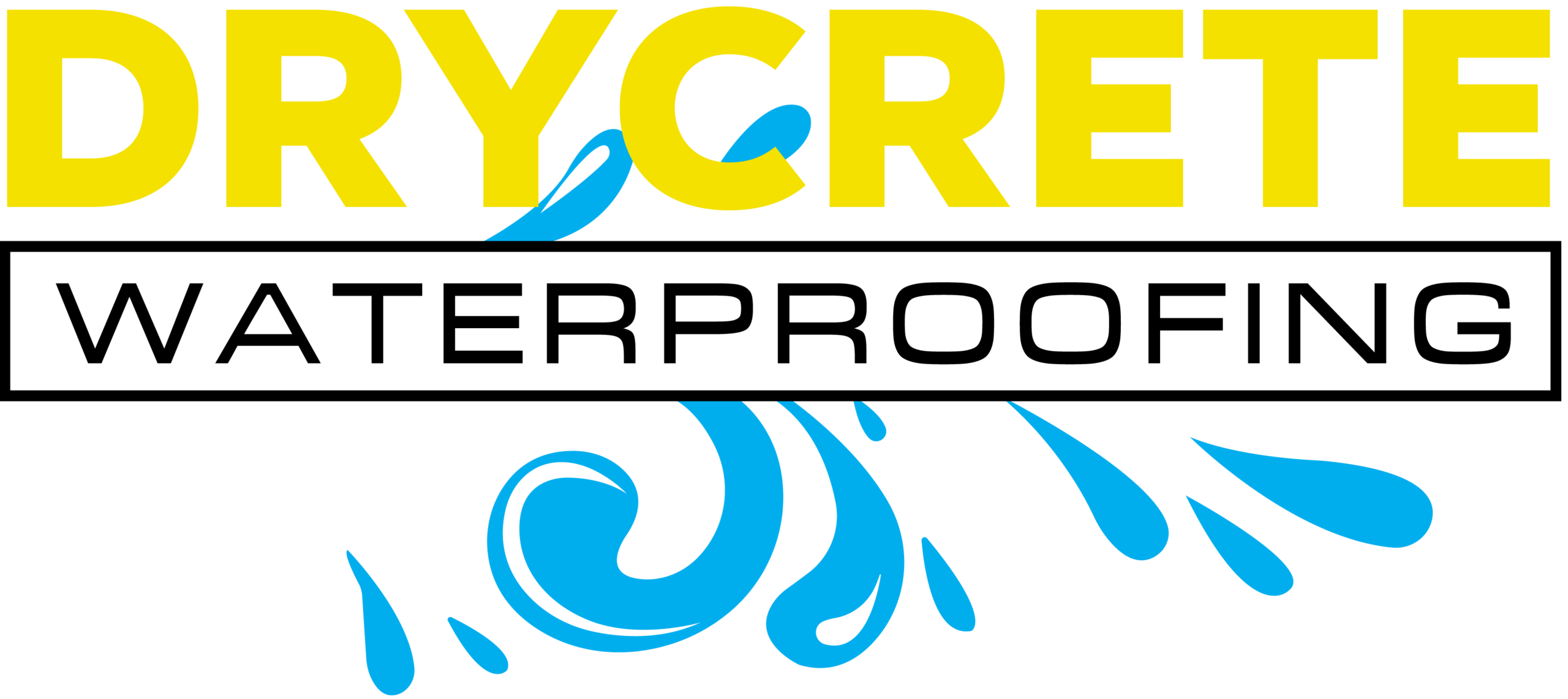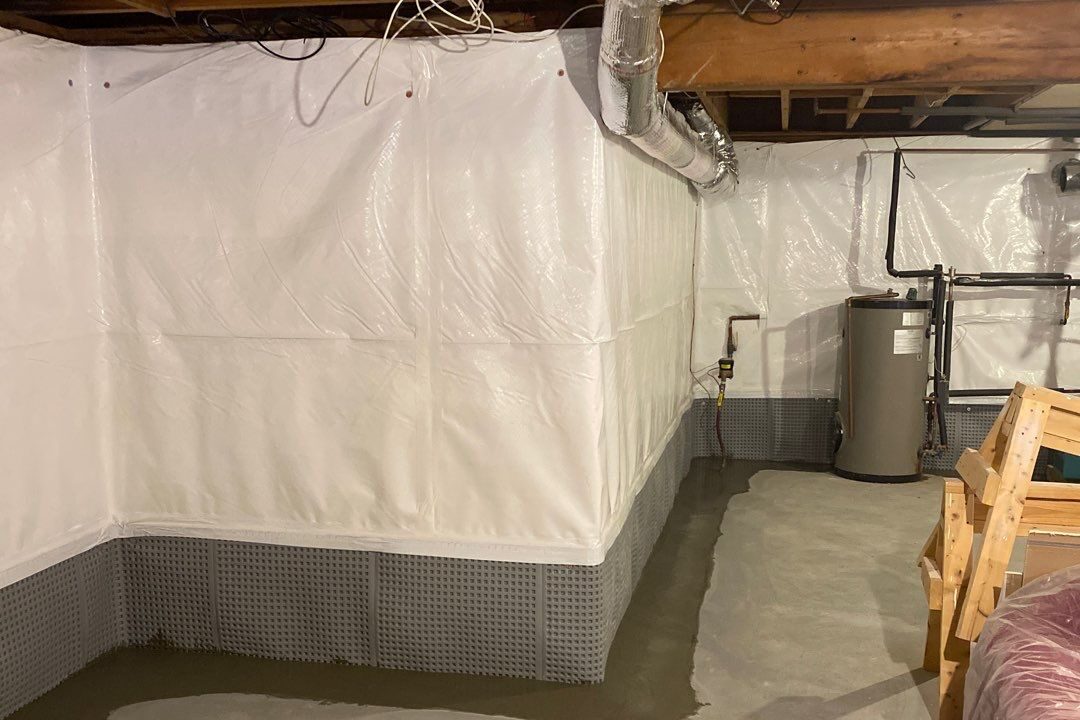Today we’re going to look at the role of vapor barriers in basement waterproofing. If you’re experiencing signs of dampness or, worse, seeing water flowing in, a vapor barrier in your basement might be the answer.
What Is a Vapor Barrier?
Basements are sunk into the ground below your home, and that ground contains a certain level of moisture (known as groundwater). This groundwater can find its way through your walls and cause all kinds of problems.
A basement vapor barrier does exactly what it sounds like: it blocks water vapor from getting in through your basement walls. There are various types, but their basic function is to act as a barrier against vapor.
Barrier vs. Retarder
Another term you may hear is “vapor retarder,” which slows the rate at which water vapor can penetrate, allowing your walls to ‘breathe’. They differ in that they are semi-permeable rather than impermeable. They’re often used interchangeably (even on product packaging!), but that’s not really accurate.
To complicate matters even more, there are also moisture barriers, which are another thing entirely. Some materials will work as both a vapor and moisture barrier, like the Flexi-seal that we use.
Common Materials
There are a few common types of vapor barriers on the market:
- Plastic sheeting
- Foil
- Closed cell spray foam insulation
Each has its own advantages and disadvantages. Each comes in various thicknesses and grades, but your local area will have a minimum thickness dictated by the prevalent weather patterns and the construction materials used in your basement. Some places may not need one at all, but if your local building codes mandate it, you must meet their requirements.
Understanding Moisture in Basements
Moisture finds its way into basements in various ways. It could be seeping in as liquid getting through cracks or, more pertinently for this blog, in the form of vapor.
All air contains a certain level of vapor (known as humidity). In the case of un-waterproofed basements, you can expect this level to be a bit higher than the rest of the home for two reasons:
- Vapor from the ground: just like air, soil contains a certain level of moisture. Some of this will diffuse through the floor and walls of your basement.
- Lower ventilation: basements aren’t typically as well ventilated as the rest of your home, leading to moisture in the air becoming ‘trapped’.
Managing the moisture levels in your basement is important. If allowed to build up, you could face problems with mold growth or, in extreme circumstances, even threats to the structural integrity of your home.
Thanks to a phenomenon called the stack effect, vapor and spores from molds in your basement can spread throughout the house, so keeping it under control is very important.
How Does a Vapor Barrier Work?
Generally, vapor barriers reduce the rate at which water vapor can penetrate a surface, allowing what does penetrate to evaporate before it builds up to a level which might cause concern. Some types may effectively stop transmission altogether.
How permeable a barrier is measured in units called ‘perms’. The lower this rating, the less vapor will be allowed through. In effect, a barrier allows 0.1 perm or less through, whereas a retarder may allow more.
Different materials allow different levels of vapor through. A class I material will let very little (effectively none) through and might include things like polyethylene films, sheet metals, and glass. A class III, however, will let a lot through and would include things like vinyl paints and plywood.
Benefits of Installing a Vapor Barrier
There are many reasons to install a vapor barrier or replace one that is starting to fail.
Structural Integrity
First and foremost, moisture can lead, if left unattended, to structural damage to your property. Vapor will take time to build to this level, but the longer it’s left to do its thing, the more serious it will become (and consequently, the more it will cost to remedy), so it’s best to deal with it early or avoid the situation ever arising in the first place. Vapor barriers are an important part of that.
Avoiding Mold
More urgent is the fact that high humidity and damp basements are a perfect breeding ground for mold. Not only are they unsightly, they will absolutely ruin anything they grow on, and they can be a serious risk to your health. The stack effect allows the humid air from your basement to spread throughout your home, carrying spores and allergens with it.
Not only is mold bad for your family’s health, once it gets a hold, it can be very hard to remove fully. As it releases spores which can be hazardous to human health, remedial work should be carried out by trained contractors, and that is not a cheap process.
Keeping moisture levels down is a vital step towards avoiding mold and a good vapor barrier in your basement is a vital step to avoiding it.
Energy Efficiency
Humid spaces are harder to heat, costing you more and burning more fuel for the same feeling of warmth. In effect, when you try to heat a damp space, you’re not only heating the air but the water it contains too, and that requires more energy to be expended.
Keeping water vapor levels down can help to keep your utility bills down too.
Create More Usable Space
A properly installed vapor barrier can turn your basement from a dank hole under your home to a new, livable space. Even if you only plan on using it for storage, it’s a good idea to properly address the waterproofing first.
The Installation Process
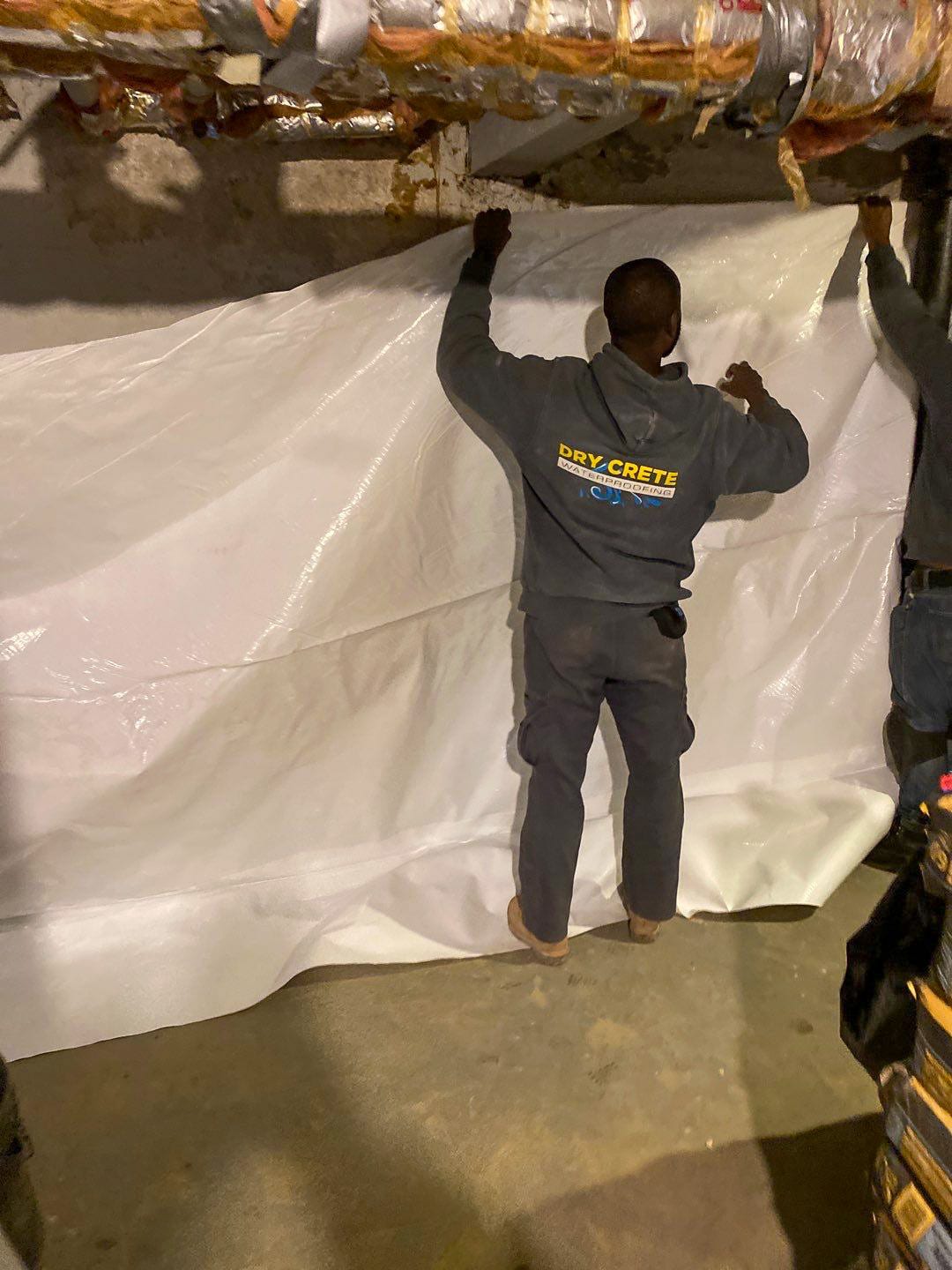
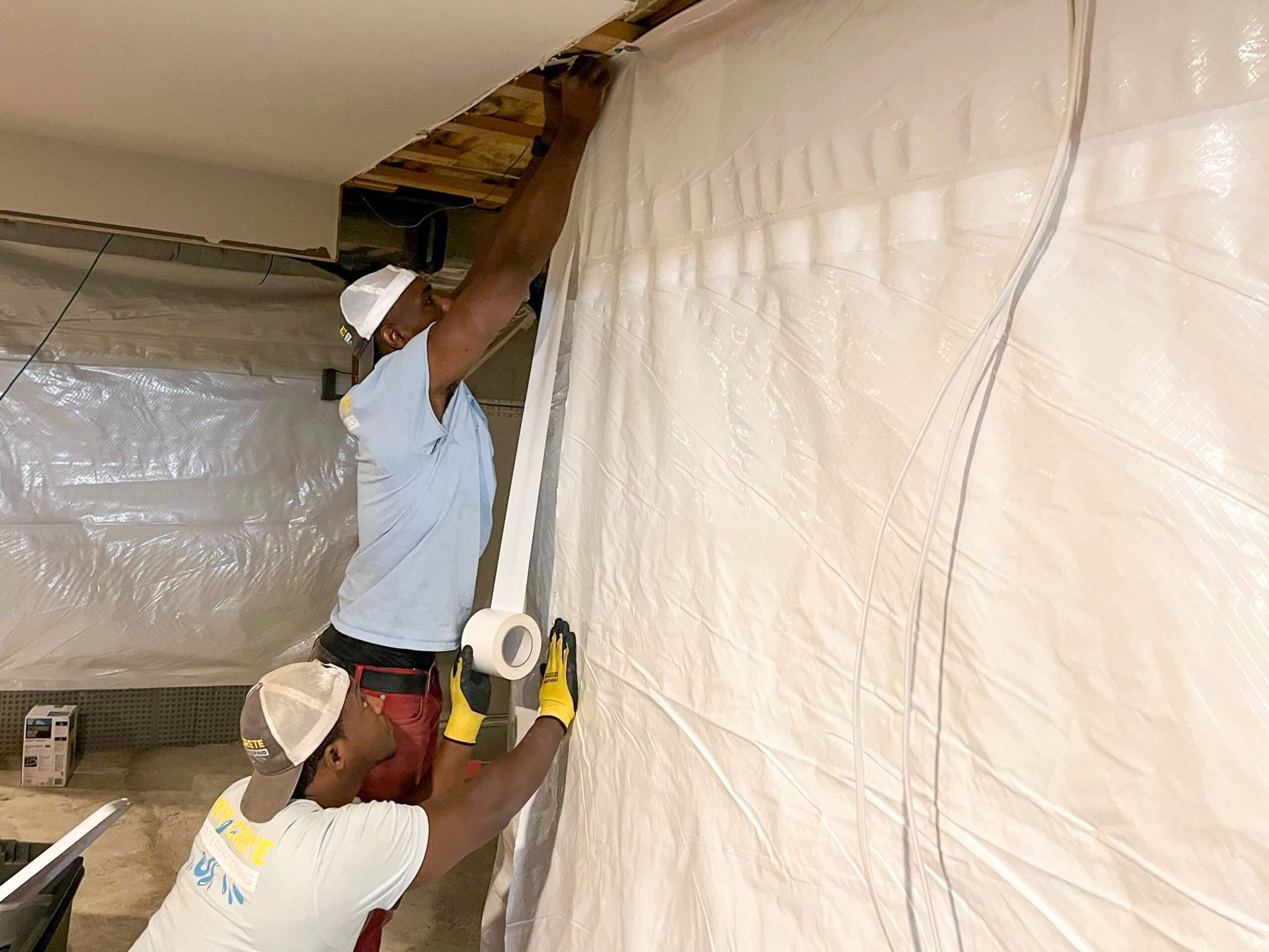
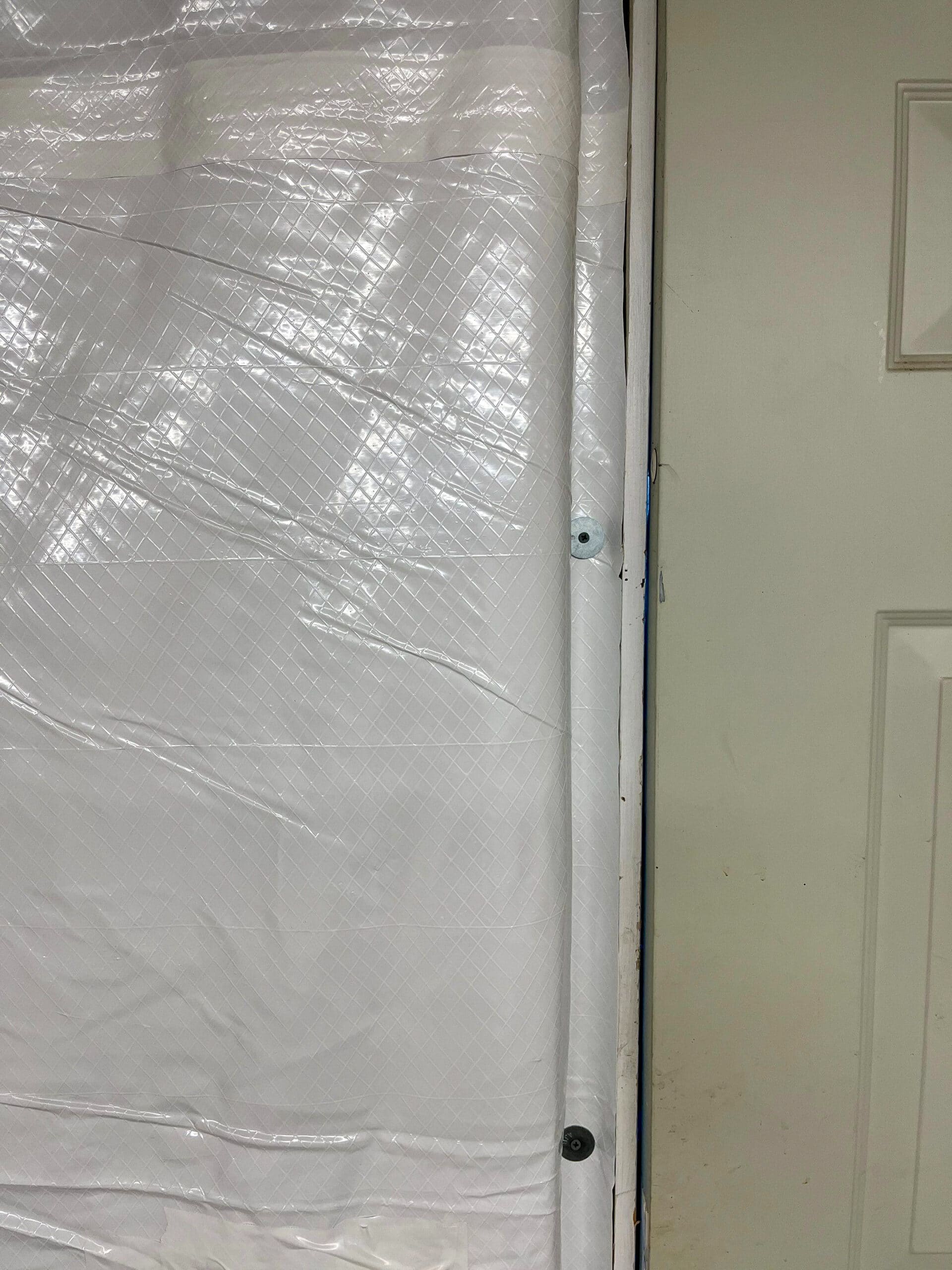
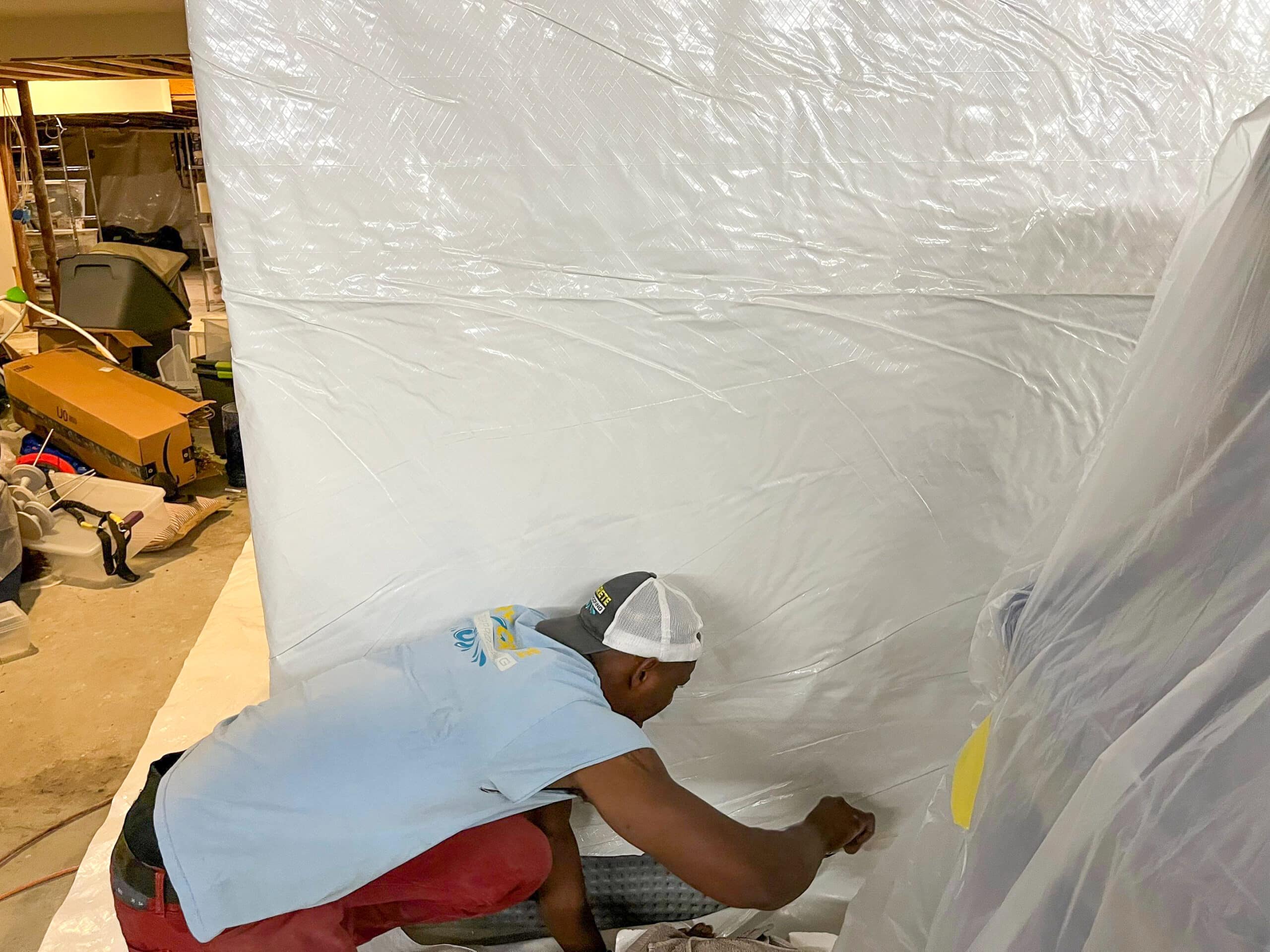
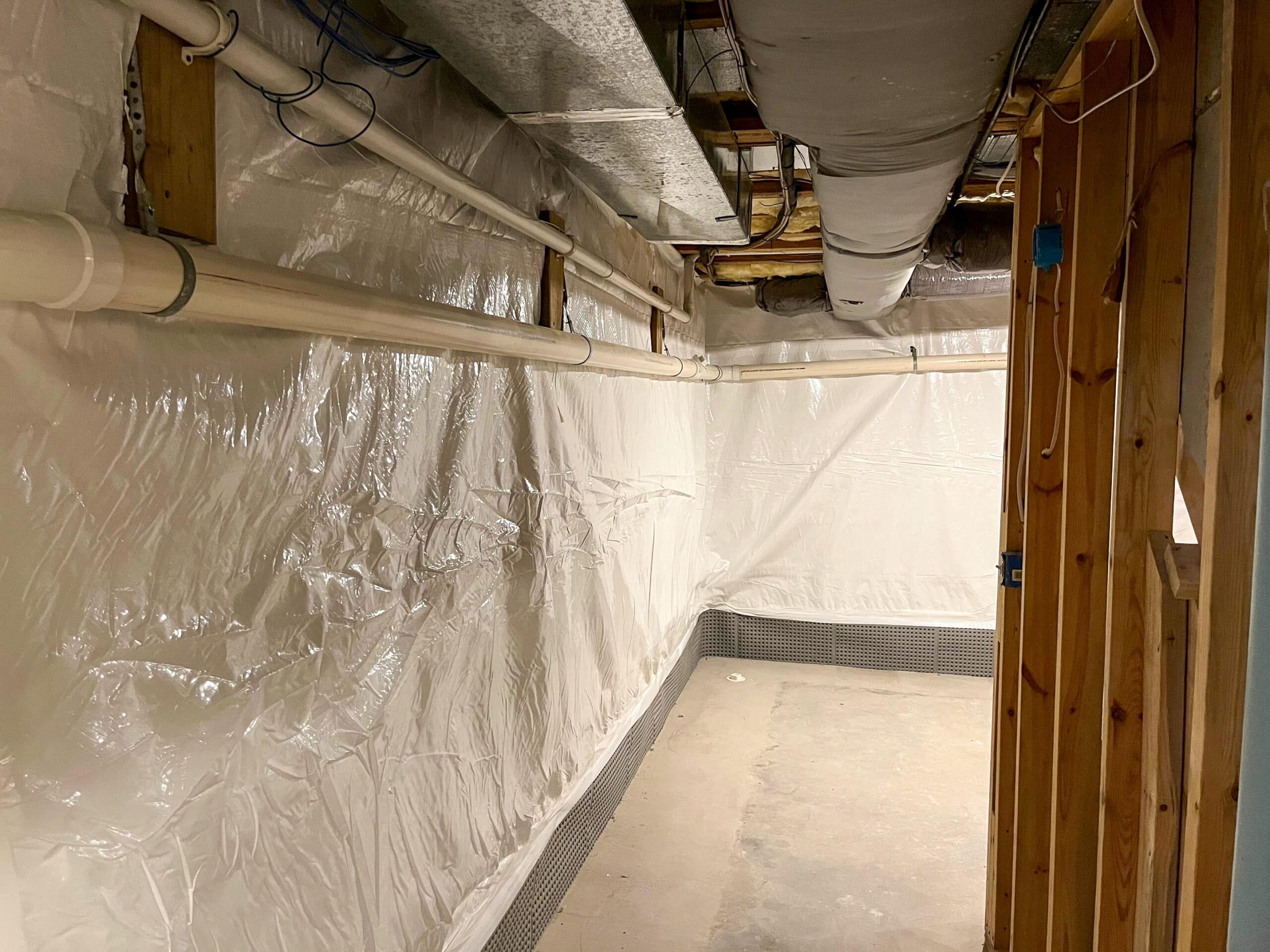
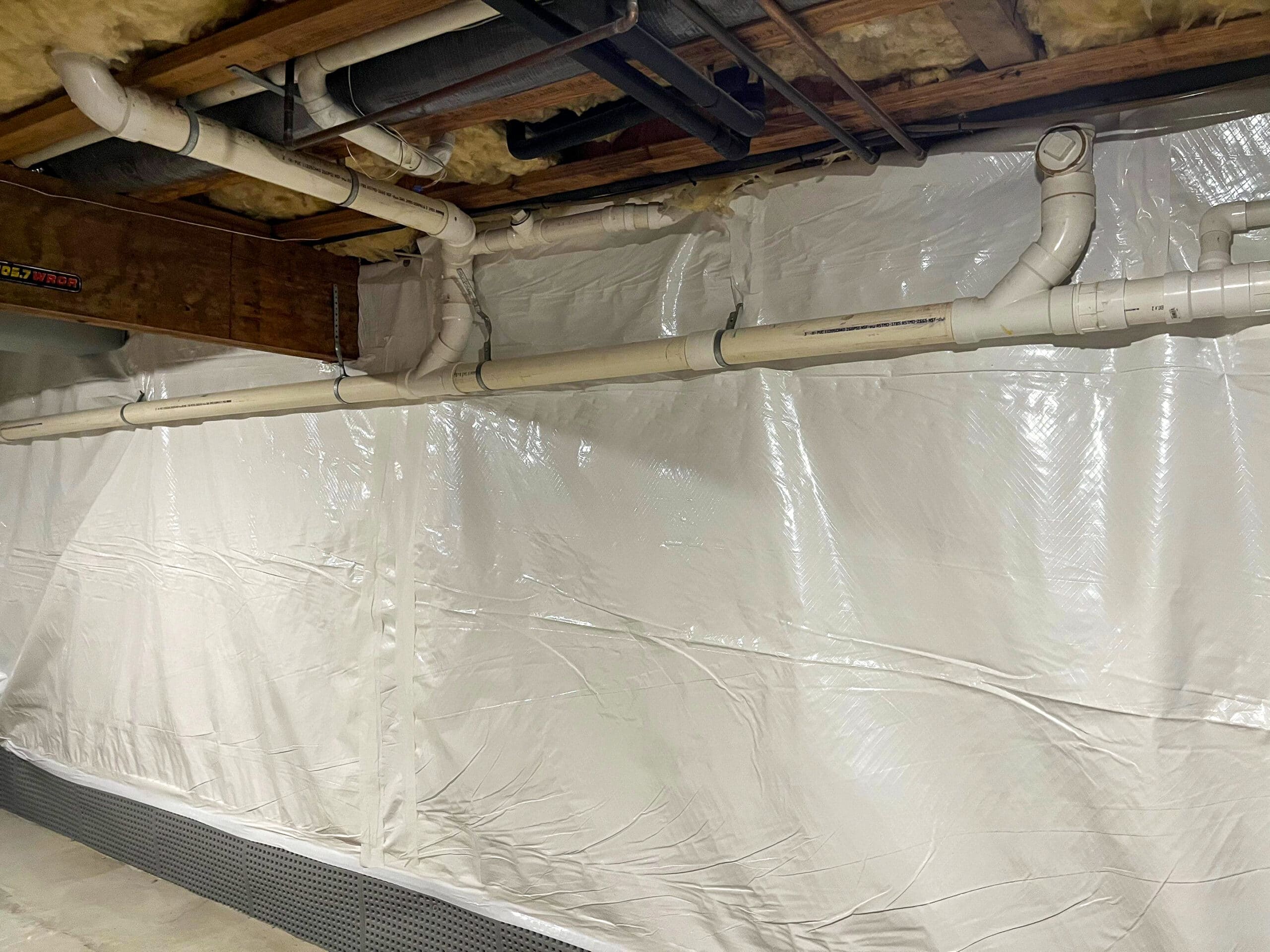
While it’s a good idea to get a professional team in to deal with any serious waterproofing work, a keen DIYer can install an internal vapor barrier, assuming everything goes to plan.
The process for installing a vapor barrier in a basement goes something like this:
- Clean the walls of any debris
- Fill any cracks on the walls or around windows
- Measure your room to work out how much you need
- Roll out the sheets, anchoring it as you go. A good rule of thumb is one anchor per 2 feet
- Make sure the membrane extends down far enough. At Drycrete we tuck our vapor barrier into a dimple board that ties into your French drain.
- Overlap new sheets by 4 inches
- Cut out holes for electrical sockets, pipes, windows, etc., and seal the edges around them
- Use seam tape to cover every joint from top to bottom.
- Any wall studs or insulation can then be installed over the barrier.
- Hang drywall over the top as you would for a normal stud wall.
For installing a vapor barrier on a basement floor requires a much more comprehensive process.
When To Call In The Professionals
There are many reasons you may want to call in a team of professionals when installing a vapor barrier in your basement.
Firstly, it’s a big, disruptive job – frankly, it’s nice to pass it off to someone else. Secondly, mistakes can be hard to rectify, especially if you’ve built a stud wall over the barrier. They might require ripping out work which has been completed over the installation to allow access, costing time, effort, and money. Letting the professionals handle it reduces this risk dramatically.
Thirdly, some installations are trickier than others. If your basement has lots of pipes, electrical sockets, and other awkward things to install around, it’s much easier to let someone else deal with it.
Finally, it’s also nice to have a guarantee on the work, meaning that if something does go wrong, it’s the installer’s problem when it comes to fixing it.
Conclusion
In conclusion, vapor barriers can play an important role in waterproofing your basement. They’re rarely the only solution but they can play a vital part in keeping mold and mildew out, leading to a healthier home, helping keep utilities down, and ultimately, preserving your property.
